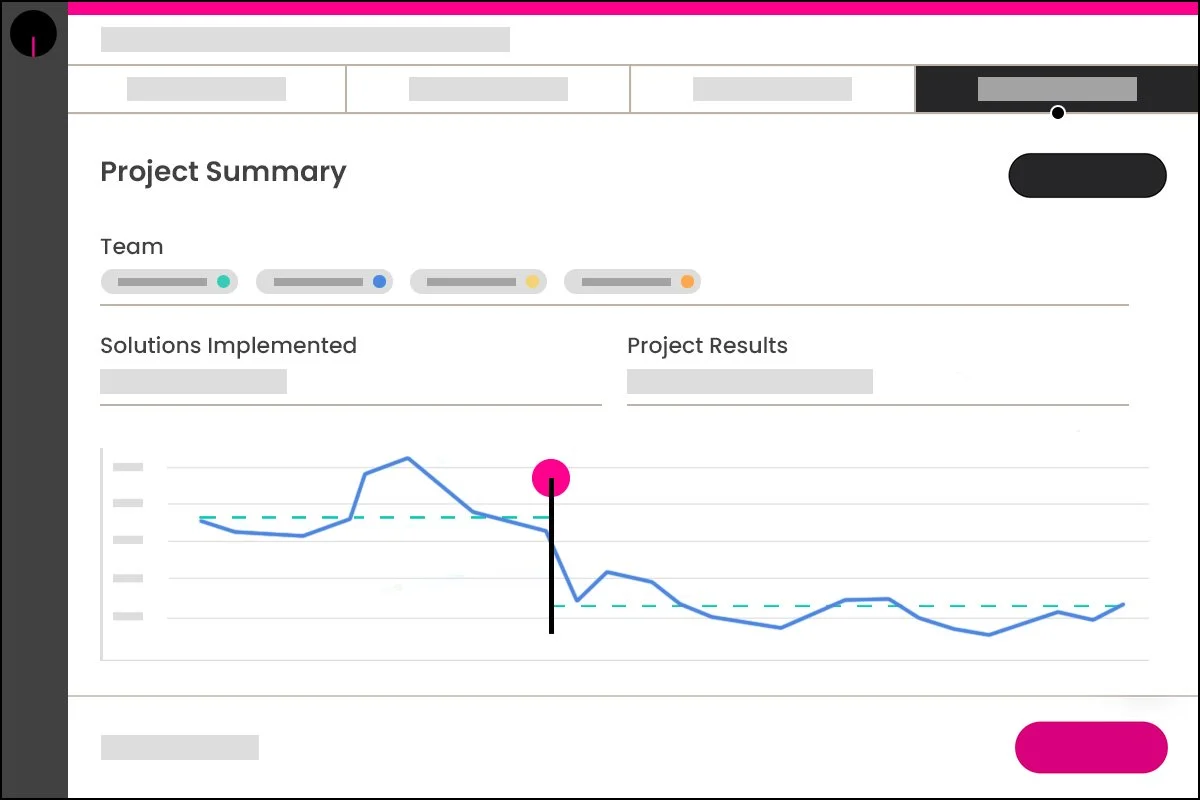
ACHIEVE OPERATIONAL EXCELLENCE IN OPERATIONS
With Kure, all your teams can reduce errors, delays and operating costs without months of training, expensive consulting or confusing software.
Or book a demo

KURE FOR OPERATIONS OPTIMIZATION:
Reduce Order Fulfillment Time
Here’s how Kure guides teams to optimize processes. In this example, a Process Optimization Team uses Kure to reduce streamline order picking, resulting in:
Improved on-time shipments
Reduced premium transportation
Reduced overtime
52% Improvement in Order Cycle Time
Step 1: What’s My Opportunity?
Clarify what optimizing the process will accomplish
A regional distribution center for a major nationwide retailer has had difficulty responding to a major volume increase, resulting in costly delays. Order pickers teamed up with supervision to remedy this problem, recognizing that many orders were not completely picked by the scheduled ship time.
With Kure’s guidance, the team clarified their primary goal of reducing the time to pick orders. Kure automatically created a Project Charter, Plan and Timeline to guide the team through the optimization effort. The goal was to reduce the average order pick time from 27 minutes to 15 minutes. This would save the company an over $500K annually.
“The goal was to reduce the average order pick time from 27 minutes to 15 minutes. This would save the company an over $500K annually.”
Step 2: What’s My Process?
Explore the steps by which the work gets done and find opportunities
Kure’s As-Is Map and Data Collection Tools guided the team to map out the current process and collect data.
The Process Walk and Kure’s AI, which includes Anomaly Detection, helped uncover several clues, such as:
Inconsistent stock location
Wrong inventory counts
Pick route resulted in excess travel
Pick schedules not always consistent with ship schedules
Step 3: What’s Causing My Problem?
Identify one or more actionable items producing the undesired effect
Using Kure’s Fishbone Diagram and 5 Whys, the team identified several root causes to the problem including:
Pick route sequence established by order line item sequence instead of stock location
Missing RFIDs resulted in wrong inventory counts
Operators "cherry pick" work, sometimes leaving less desirable picks for last
Step 4: What’s My Solution?
Implement specific solutions to make the problem go away
Focusing on these root causes, Kure’s Solution Selection Matrix and Implementation Plan helped the team identify and implement the best solutions.
Identify products that most often lacked RFIDs and use barcodes as a work-around until RFIDs are corrected
Generate pick sequences based on storage layout, minimizing travel distances
Sequence pick orders and require operators to pick in the prescribed sequence
After implementing these solutions, the average pick time was reduced from 27 to 13 minutes (52% improvement), exceeding the goals and saving the company over $720K per year.
Kure automatically generates this documentation alongside a Project Summary so the project team was able to easily communicate and celebrate their success — helping them efficiently transfer and scale their success to similar operations.
“After implementing these solutions, the average pick time was reduced from 27 to 13 minutes (52% improvement), exceeding the goals and saving the company over $720K per year.”

“Guiding you every step of the way is what made Kure such a profound asset in optimizing my client’s inventory flow!”
— Billie P., Consultant, C&P Safety Group
“Kure is easy to use and very accessible. It makes you think differently and you start to see opportunities for improvement everywhere.”
— Rita M., Project Assistant, Wehr Constructors




